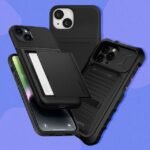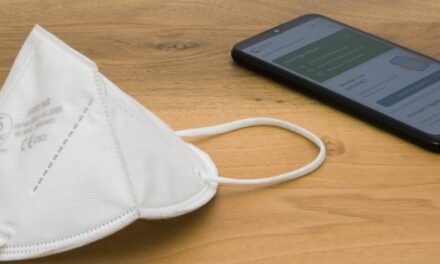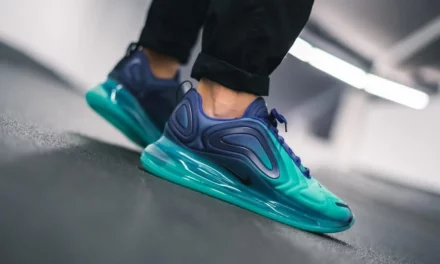
How to Use Snorkeling Gear

If you plan on snorkeling, you need to know how to use snorkeling gear. Before diving in and snorkeling, you should start in shallow water. Keep your head upright and breathe slowly through the snorkel. This will avoid inhaling the water inside the snorkel, but it will help you suck air past the water and take a full breath.
Equipment
The equipment you will need for snorkelling consists of a mask, snorkel, fins, and dry bags. Many snorkeling equipment manufacturers have specific designs for different types of snorkeling. Buying equipment from a reputable manufacturer will lower the risk of buying equipment that will not meet your requirements. Some snorkeling equipment manufacturers even offer warranties.
Snorkelling equipment is available at many retail stores, especially outdoor supply stores. There are many styles and designs to choose from, so make sure you find a style that suits your personality. For instance, you may like the look of a large or simple mask. Whatever you decide to buy, make sure it can fit comfortably on your face and neck.
Snorkeling equipment is not expensive and can be used by children and adults, and some basic equipment is provided on most snorkeling trips. You can also find snorkeling classes for beginners for a low cost.
Snorkel
If you want to go snorkeling, you’ll want to learn how to use snorkeling equipment properly. First, understand the importance of breathing. Humans cannot breathe naturally underwater, unlike fish, which have gills that allow them to breathe underwater. As a result, snorkelers use breathing equipment to breathe while underwater. Depending on their lung capacity, they may hold their breath for 1.5 to 2 minutes. Freedivers, on the other hand, can hold their breath for up to 20 minutes.
While playing snorkeling, divers should remember that their mouthpieces will tilt back if they look directly ahead. The correct technique is to look up and downward, keeping the snorkel upright and preventing fogging of the mask lens. For this purpose, adding an anti-fog solution to the mask is helpful. A good anti-fog spray is Optix 55.
Before you start snorkeling, learning how to breathe properly while underwater is important. To do this, ensure you are in chest-deep water, kneel or stand upright. Then, open your mouth and breathe slowly. Remember to breathe slowly to conserve energy and make sure that you get enough oxygen. Once you’re comfortable, begin to snorkel. You can always blow air through your tube to clear it if you have trouble breathing.
Plain snorkel
The main part of a plain snorkel is the mouthpiece, which is soft, and flexible. Most of these are made of natural rubber but can also be made from silicone or PVC. The typical design includes a concave flange and two lugs that grip in between your teeth. The length and diameter of these components affect how much resistance you experience while breathing.
When snorkeling, it’s important to know about water currents, weather patterns, and marine life. Even if you’re an experienced swimmer, winds and other hazards could pose a problem. In addition, you should know which types of animals and plants are dangerous and what to look out for. Always be aware of your surroundings, and never snorkel alone.
The basic snorkeling equipment includes a mask, snorkel, and flippers. You’ll also need a wetsuit and diving fins. Fins are a vital component of snorkelling, giving you more surface area to push against the water and helping you remain horizontal. The type of fins you choose should also offer floatation for your feet. For warm water, you can opt for Full Foot Fins, while for colder water, you should opt for Open Heel Fins.
Full-face snorkel mask
A full-face snorkel mask is one of the most important pieces of snorkeling equipment, and it helps keep the user’s vision clear and allows him to breathe fresh, clean air. The masks come in various sizes and must be selected carefully to ensure they fit properly. To choose the right size, measure your face and consult a mask sizing chart to determine which size is best for your face shape.
Full-face snorkel masks can be dangerous if they are not made well. The design should be patented, and the cover should fit snugly and correctly. It’s also important to learn how to use it properly. Incorrect use of a full-face snorkel mask can lead to drowning and serious injuries.
Full-face masks are also more comfortable and convenient than traditional masks. A full-face act covers the entire face, including the mouth. It also allows you to breathe more easily without the mouthpiece, which prevents jaw fatigue. It also provides a wider field of vision – a 180-degree field of vision – than an individual mask.
Diving mask
If you plan to snorkel in the water, it is important to have the right mask for your facial contour. A diving mask should fit snugly around your face, and it should also be comfortable. It would help if you tried several different types and sizes before buying. The mask’s shape should follow the contours of your face without any gaps. It should also be comfortable around the brow bone and top lip.
There are many different models of diving masks. A full-face scuba mask is compatible with all types of regulators, and most divers can use it by hooking it up to their existing regulator. It also features a double-sealed face skirt for a dry fit and a soft nose pocket for easy equalization. It can also be upgraded with features such as an ambient breathing valve and brackets for lights.
A good diving mask is made of high-quality materials and can protect your eyes while snorkeling or free diving. The faceplate and lenses should be attached securely to the frame. Most dive masks are silicone, but you can find some with stainless steel skirts. It is best to avoid plastic or rubber dive masks, as they will not form a good seal. In addition, a good diving mask should have anti-fog properties, which help prevent fogging.
Swimfins
There are many different types of fins. The best kind for snorkeling is one that is short and elliptical, as they are more effective at reducing energy consumption and air consumption. Choose a pair that fits comfortably, and make sure you put them on before entering the water.
Fins are important for snorkelling because they help the wearer propel themselves through the water. Human feet cannot provide enough thrust for such a long distance, so fins are designed to fill this void. Freedivers commonly use long fins, but short, stiff-bladed fins help bodysurf and manoeuvre. While the modern swimfin is often associated with the freediving community, there are some historical examples of swimmers using fins in landlocked countries. For example, the 1959 Soviet postage stamp shows an image of a finned recreational diver.
If you’re new to snorkeling, you may not have experience using fins. Luckily, there are options available that are specifically designed for beginners. Swimfins are lightweight and comfortable to wear, and they can be easily thrown into your carry-on to save space in your luggage. Some fins can be adjustable, and some are even multi-sized, which makes them great for sharing with family and friends. If you’re unsure what size you need, consider using fin socks, which can make the straps less uncomfortable.
Exposure protection
You are using exposure protection while snorkeling is essential for the safety of you and your snorkeling companions. The main reason is the sun’s rays, which can cause serious damage to your skin. Sunscreen is a great way to protect yourself and your snorkeling gear from the sun’s harmful rays.
You might need to wear a wetsuit or a dry suit depending on the water temperature. Wetsuits trap a layer of water that the diver warms by body heat, while drysuits keep water out completely. The wetsuit is best suited for warmer water. Moreover, some wetsuits are designed for colder water.
Sunscreen is also necessary for snorkelers, as the water reflects the sun’s rays. However, if you’re light-skinned, sunscreen is not enough. You can also wear clothing with a high UPF, and consider the time of day and season when you’ll be diving.
Snorkeling vest
A snorkeling vest is one of the essential parts of a snorkeling trip. This vest is designed to fit snugly around your torso and is inflated for the right level of buoyancy. Though it does not provide life support, it can increase your chances of survival. This vest is available in two main types.
Snorkeling vests come in a variety of styles and colours. Most of them are made of neoprene or mesh material. A quality vest will have a brass inflator and a high-visibility design. Some of them have a pocket on the side for small items.
A snorkeling vest has several advantages. It helps prevent fatigue when swimming in the water. It also helps people with physical conditions stay afloat. The vest helps save energy by preventing the diver from having to make a lot of movements to stay afloat.






























